I knew in my mind exactly what I’d be getting from the Gist V2 in Delrin — I own an earlier Gist in brass, and I’ve had experience with Delrin in the past. But the combination of the material and the design still surprised me when I had it in my hand.
Described in broad strokes, the Gist sounds pretty conventional. Screw cap, metal clip, section and barrel, converter, stock Bock nib. Vaguely curved shape with flat ends. The threads are in the normal place. The V2 is even more conventional than the V1, because it has a longer barrel to accommodate more converter types, so it doesn’t feel like a chunky pocket pen as V1 did.
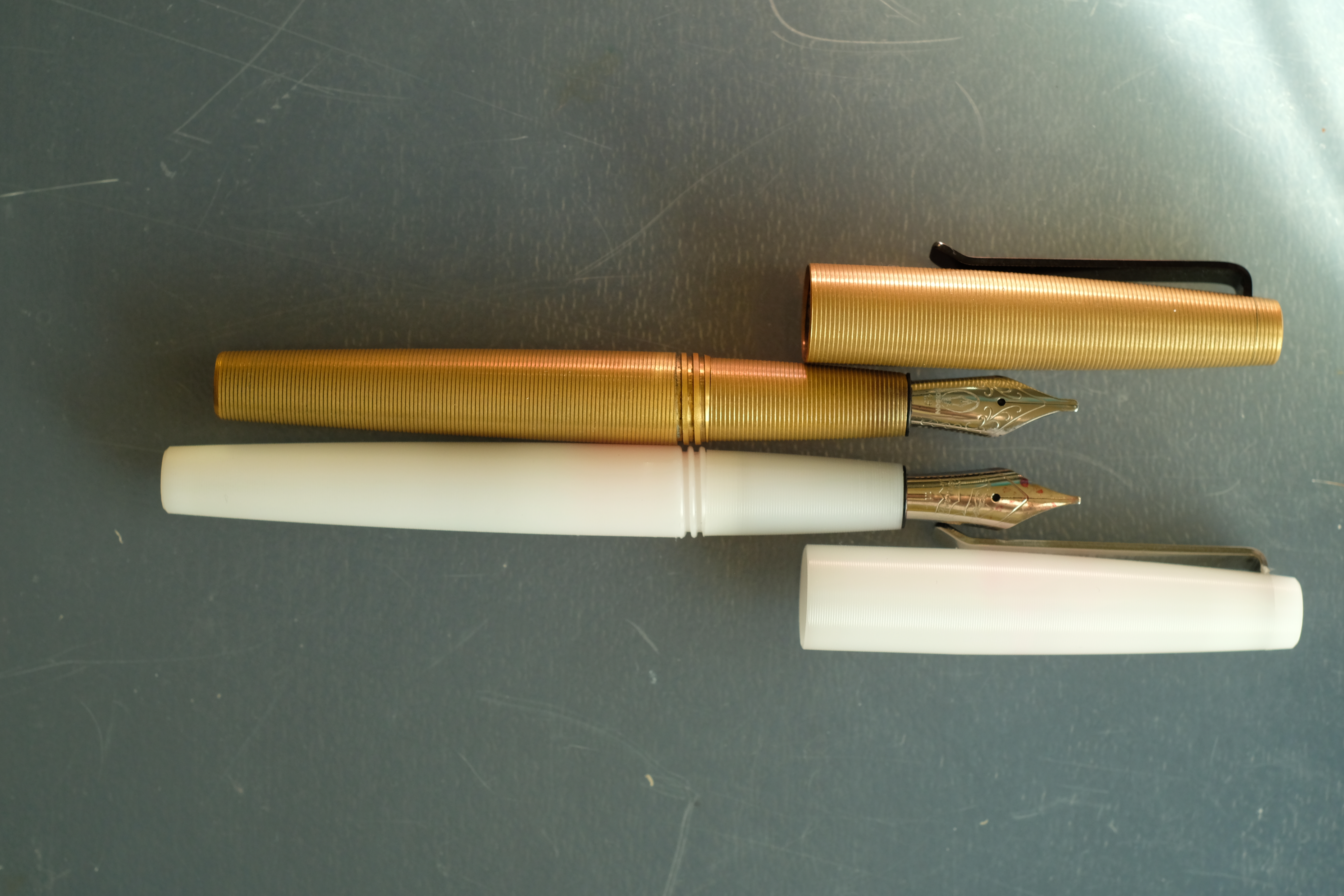
But look in more detail and there are plenty of unconventional design choices. Most obvious is the material: the white Delrin I opted for is shockingly white, uniform in pattern, and actually surprisingly translucent. The pink Pilot ink I loaded in mine is visible through the converter and barrel even without a strong backlight.
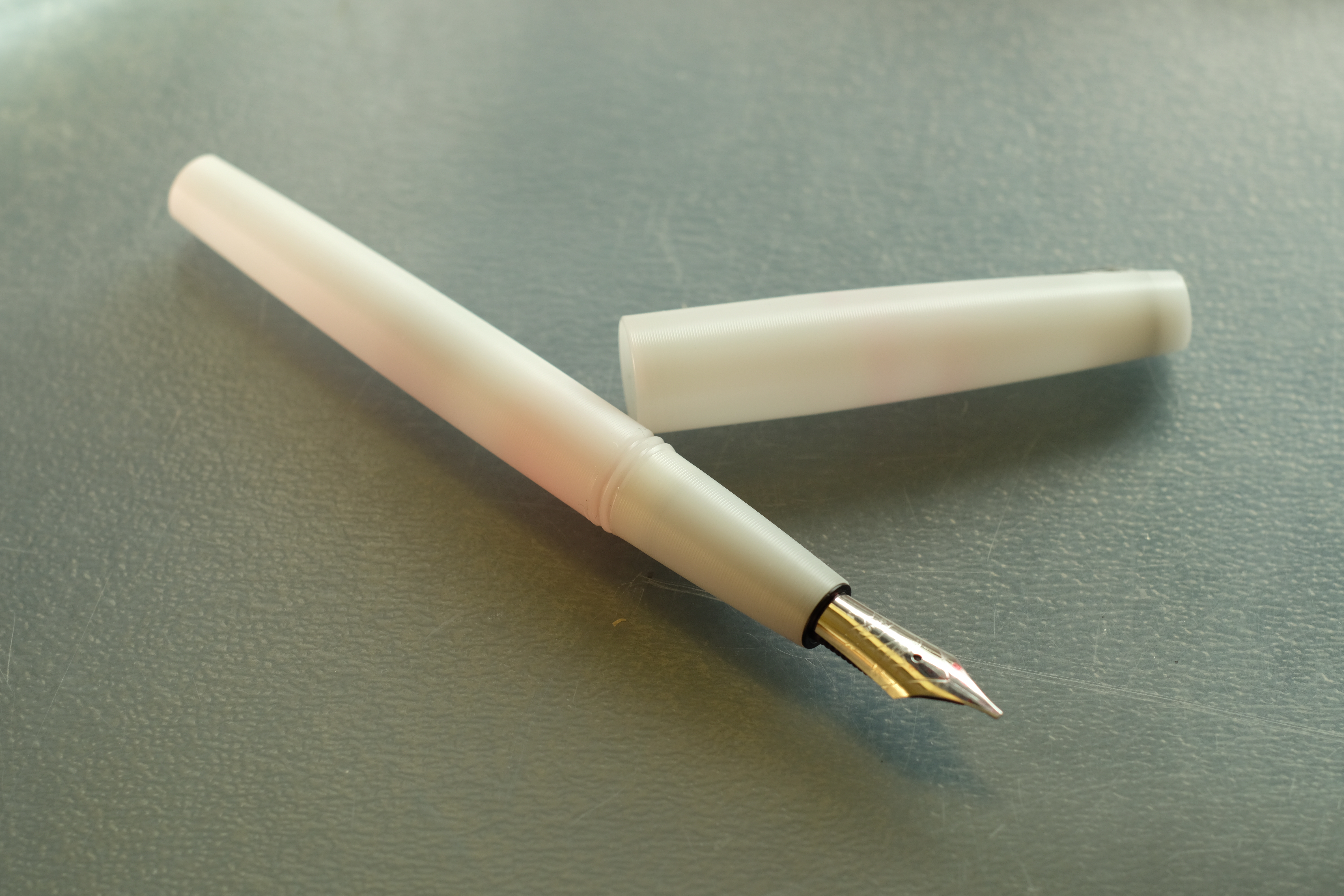
Delrin is super light, quite low friction, and very robust. At less than 20g capped, the Gist feels alarmingly light in my hand compared to the heavyweight brass. I’m actually not sure I like it — there’s something about the Gist design that suits metal, and I wish I’d waited for Will at Tactile Turn to get more titanium parts machined — he was out of stock when I approached him for a review sample. Poor timing on my part.
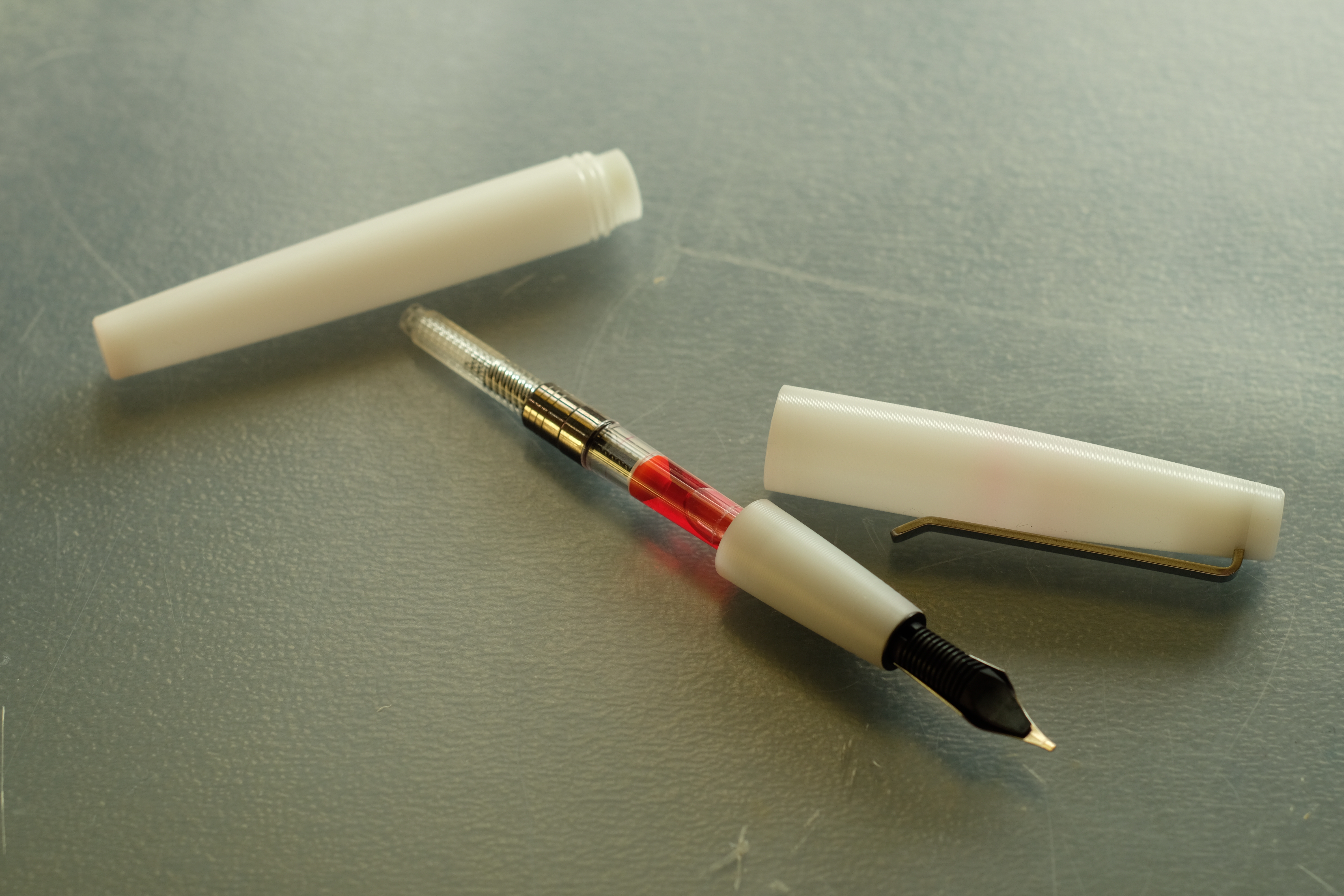
The second most distinctive design feature is the texture. All of Tactile Turn’s pens are machined (beautifully, I might add) instead of cast, and Will runs a spiral groove down the whole length of the pen barrel, section and cap, giving a very noticeable grip at every point. It’s not aggressive, but noticeable for sure. And to me it’s always been the perfect solution to a heavy pen made from otherwise slippery metal. The V2 has a shallower, less aggressive texture than the V1, with a much finer groove pitch.
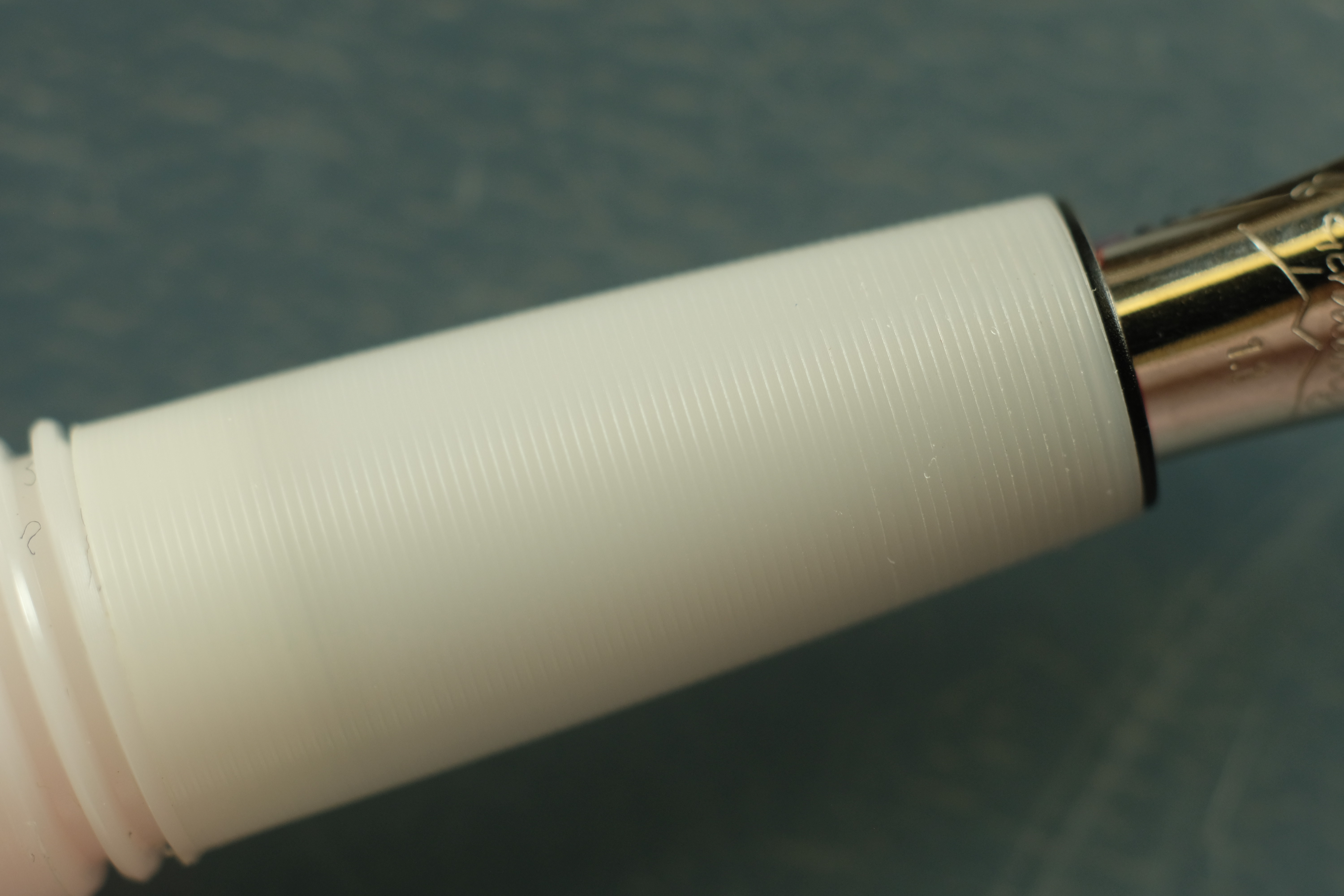
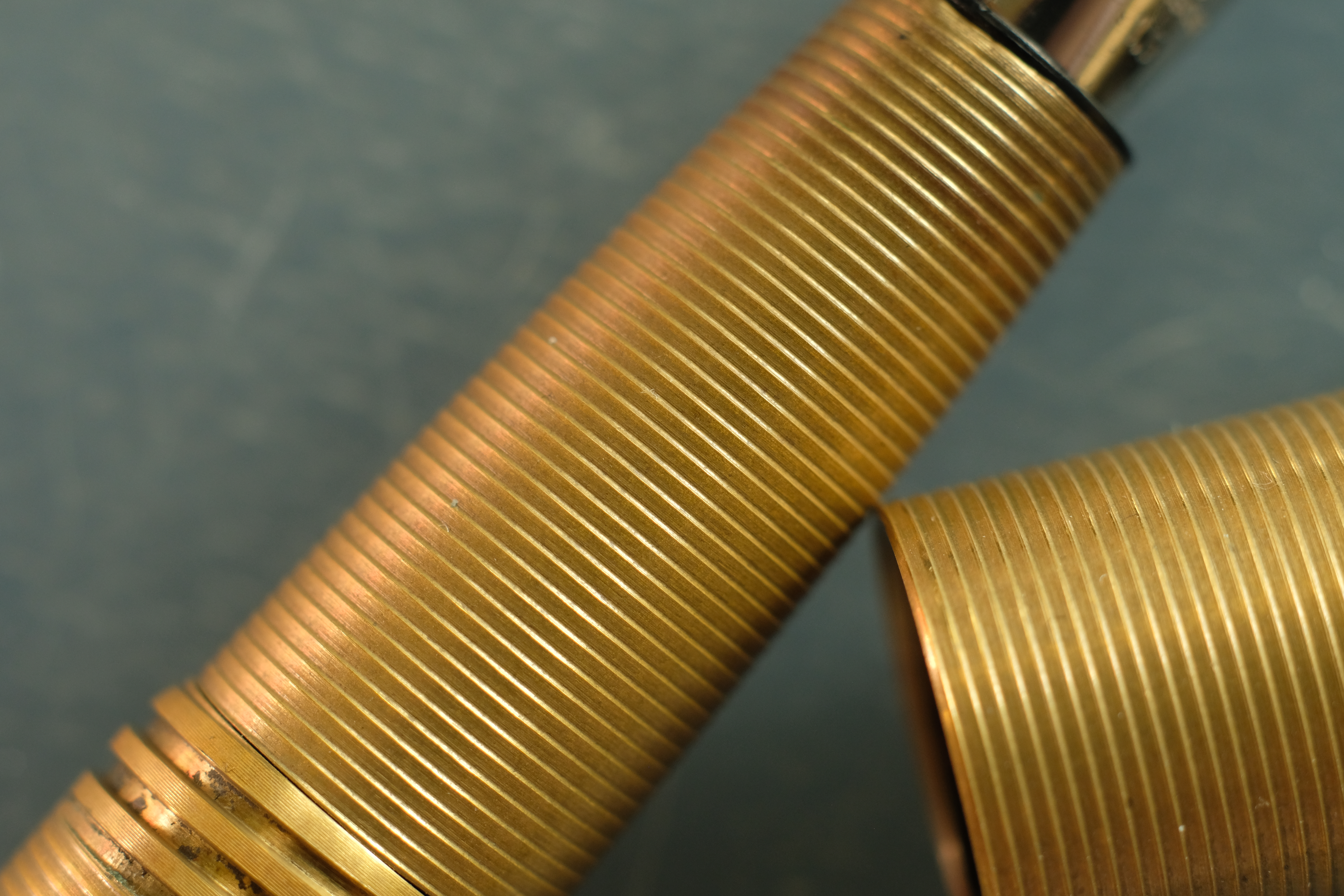
I have always appreciated the huge long section on the Gist — you have acres of smooth curving space to accommodate any grip. This is one area where the relatively small pen really punches above its weight.
And behind that section, the barrel threads. On the V1 these were square-cut Acme threads with a flat top, and they worked like silk (the joy of brass). On this Delrin model, they are still Acme, but they have a rounded or chamfered profile that to me actually makes the chunky threads more noticeable (probably because it increases the perceived gap between the top of each thread).
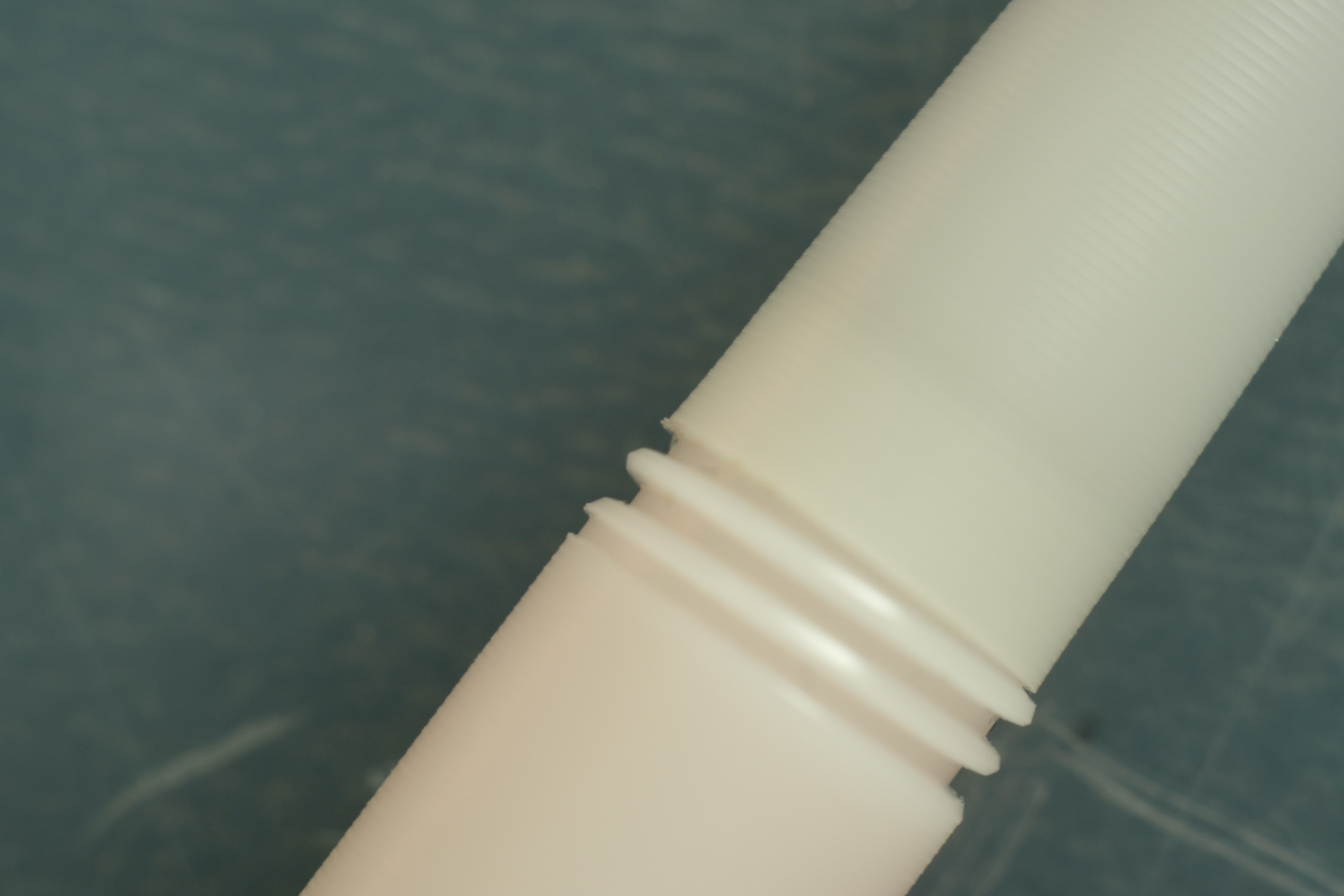

The cap is long to accommodate the large section, and it screws on and off securely without too many turns — 1.5 down from 2ish on the original (I use the weight of the brass to kind of spin the cap off on my v1). I never had it come loose accidentally. And I never experienced any drying out even when I left the Gist capped for a few days unused.

The clip is smooth folded steel, available in raw or black finishes. It’s super strong and well finished, so no sharp edges. The new clip seems ever so slightly longer than the old one, but the design is the same.
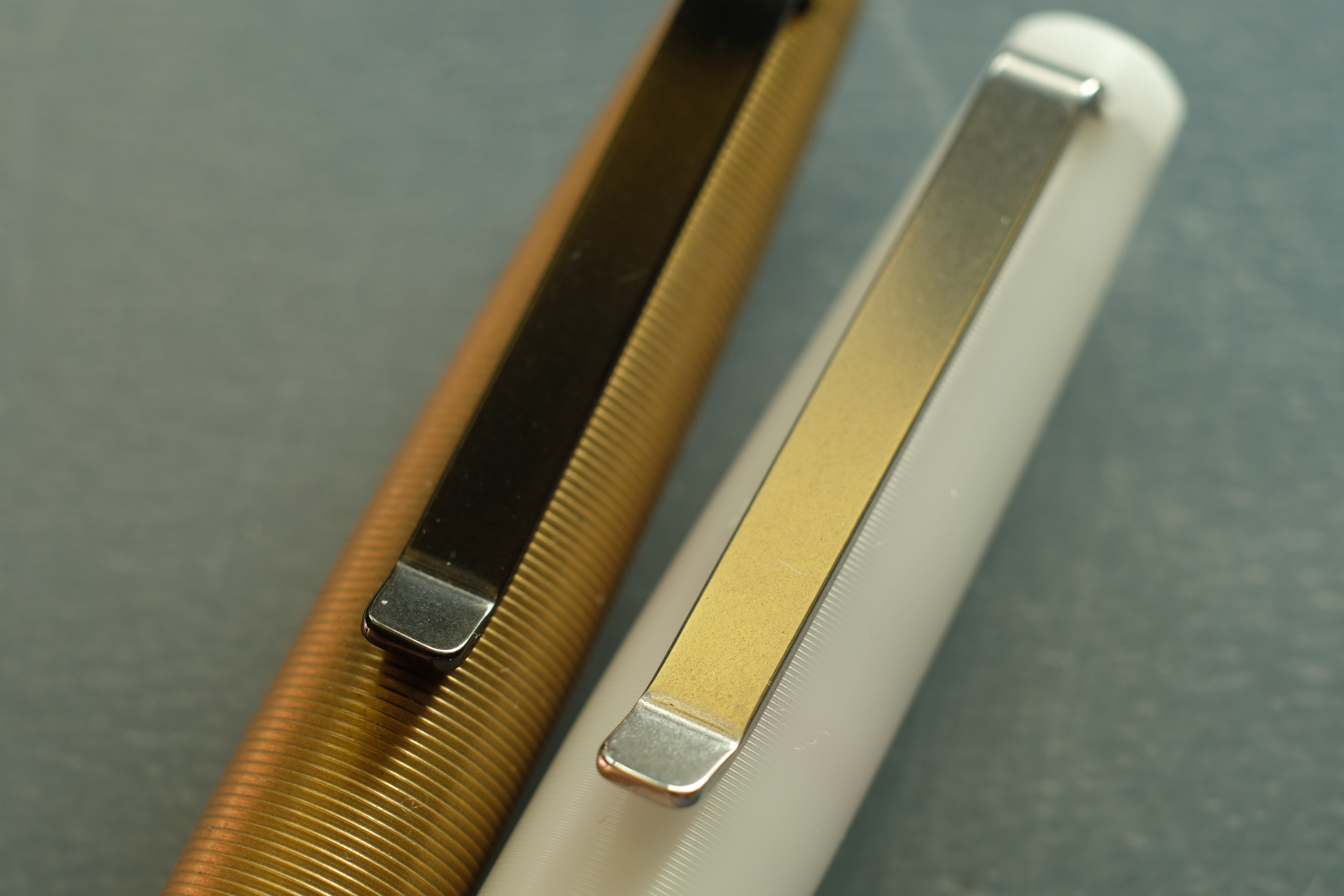
The nib is a standard #6 Bock. I opted for a 1.1 stub, and unusually for a Bock it wrote just the way I like out of the box.
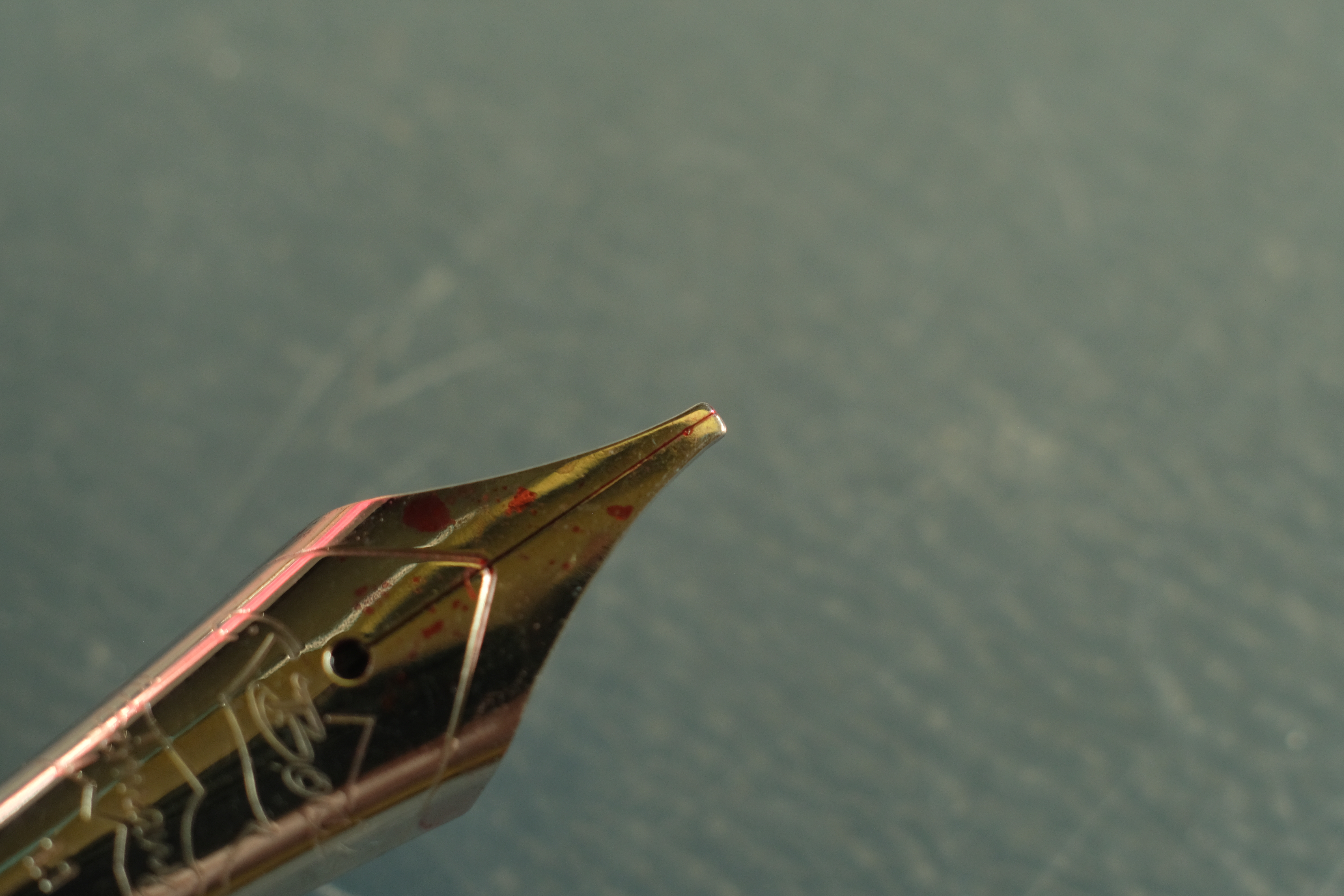
The #6 nib is in proportion to the pen and if you don’t like it or just fancy a change, you can swap the nib unit in seconds. It would have been cool if the nib housing and even the feed had been white or clear to match the Delrin, instead of standard black.
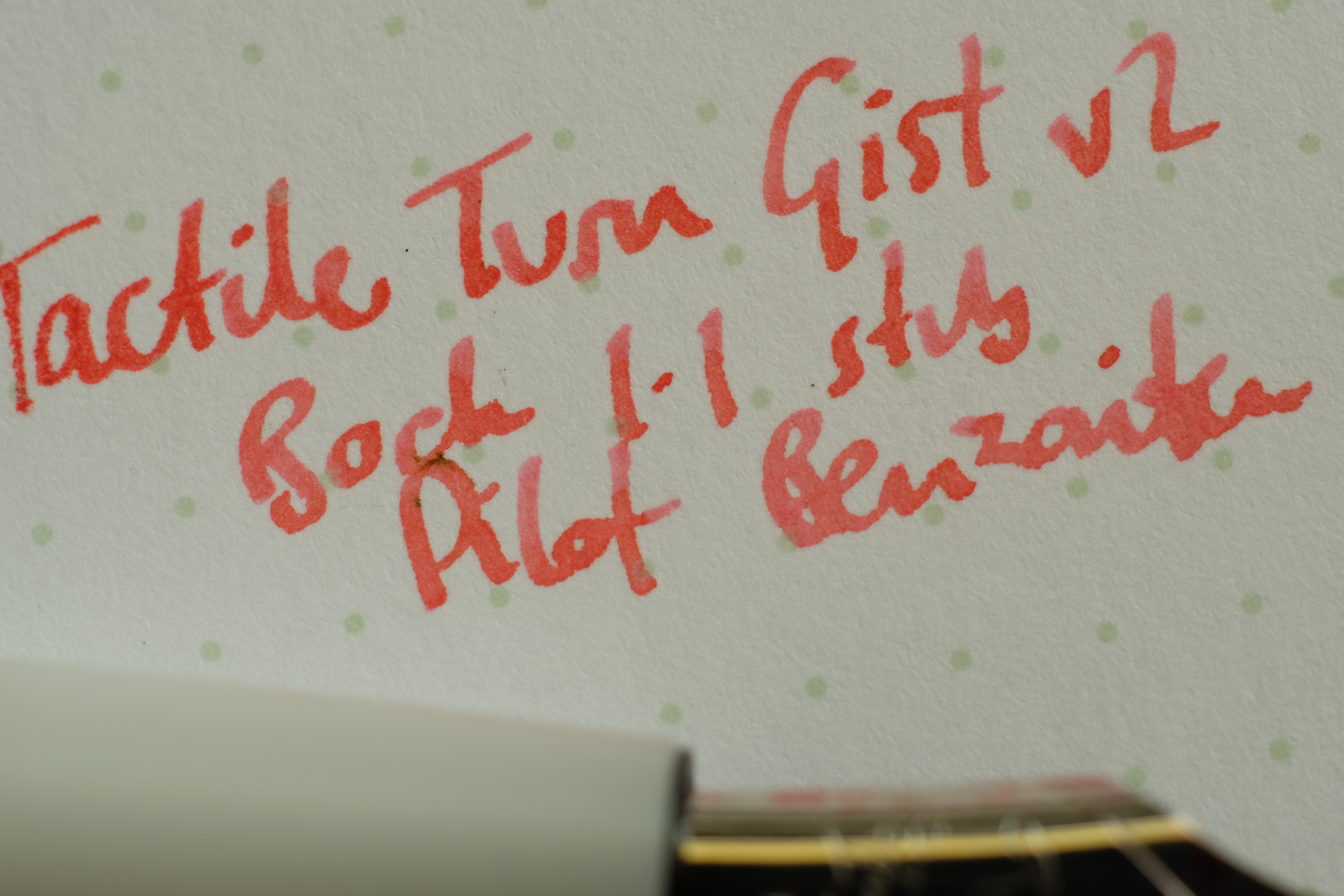
With the pen in hand, the overall feeling is really locked in. The light weight of the Delrin plus the pronounced texture and generally short length of the Gist means there’s no slipping and sliding, no feeling of a heavy pen swinging. It’s very agile and controlled. I didn’t even bother trying to post it, but of course it does, securely.
This is a pen where what you see is what you get. No fancy packaging, no metal trim, no detailing on the clip or finials, no engraved branding, just the parts you need to write with and machining that wears its heart on its sleeve with pride. In that way it really reminds me of the Kasama Una, or the Karas Vertex.
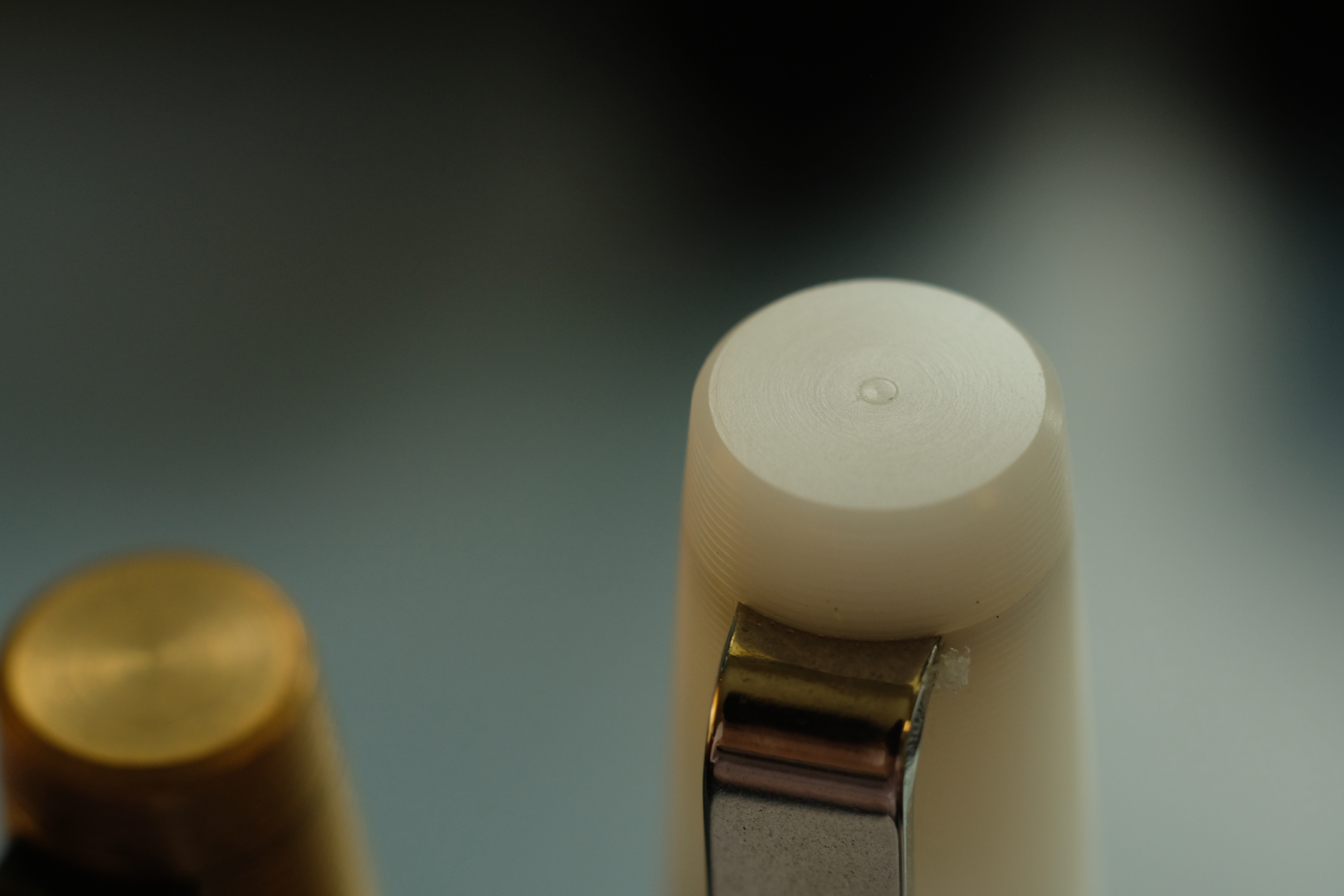
I can’t fault the Gist as a writing machine and a daily driver. Its design is very usable, and Delrin has a host of practical advantages, which speaks to the company’s mission of making hard-use pens. The grooved finish does a great job of hiding scratches and pocket wear.
Personally though, I find the white Delrin makes it feel a bit insubstantial and even clinical — it’s almost unnaturally white and pure, like it’s had a primer but hasn’t been painted yet. By contrast the brass Gist I own is heavy, patinated; it goes from freezing cold to hand-warm. You can feel the weight in your pocket. The parts ring as you tap them together. And of course, brass smells. I kind of miss that personality in the Delrin model.
The updates to V2 of the Gist are welcome (even if they break compatibility with V1 pens), but I think the titanium model is the sweet spot — unless you have a problem with metal pens, of course. It would more than double the weight and bring back some of the presence I’m missing.
The Delrin Gist is $99 with a steel nib, while the Titanium version is $219. Brass and copper versions sit in between. Tactile Turn sent me this one to review for free, although I bought my brass one at full retail price back in the day. I think these are competitive prices for turned pens made in the USA, with clearly so much thought put into the details of the design.
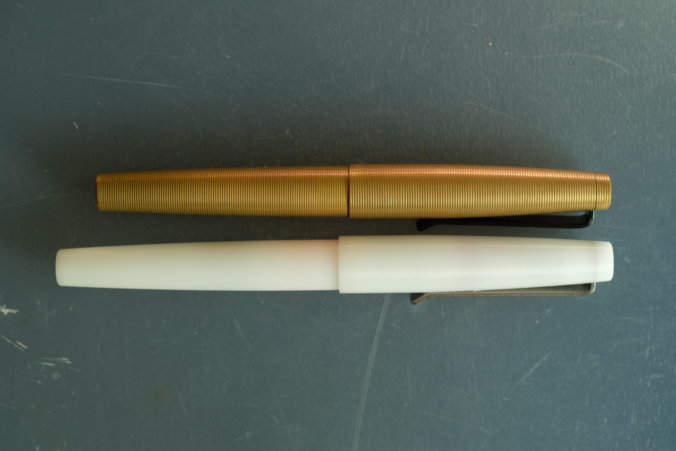
0 Comments
3 Pingbacks